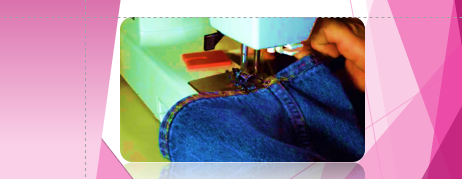Sewing-Machine Needles
Learn how to recognize the many types of standard, decorative, and special-purpose machine needles. Discover what they are all best for, and how to troubleshoot problems.
The configuration of these needles is established on this fabric to be sewn.
Universal as an example
Uses: Safest needle choice for most fabrics.
Setup: Has slightly rounded point and elongated scarf to permit almost foolproof appointment of needle and bobbin hook.
Troubleshooting: When textile is not medium-weight unique, consider needle specifically best suited to fabric. For example, size 18 universal hook ideal for heavy jeans, but size 18 denim jeans needle works more effectively.
Ballpoint and stretch needles
Uses: Ballpoint needle for heavier, looser sweater knits; stretch needle for highly elastic fabrics, like
Spandex, or Lycra.
Configuration: Possess rounded points that enter between fabric threads somewhat than pierce them. (Stretch-needle point is slightly less rounded than ballpoint. )
Troubleshooting: Test-stitch knits with ballpoint, stretch, and common needles to see which doesn't cut yarn and yields best results. In the event ballpoint skips stitches, try stretch needle.
Microtex and sharp needles
Uses: Stitches microfiber, silk, synthetic leather; precisely stitching edges; and heirloom sewing.
Configuration: Posseses an acute point.
Troubleshooting: Essentially trouble-free, but fabric might require a Teflon, roller, or even/dual-feed presser foot.
Natural leather needle
Uses: Excellent for sewing natural leather.
Setup: Has slight cutting point (almost like an arrowhead).
Troubleshooting: On synthetic leather, unless it is rather heavy simplicity of, cuts rather than pierces stitch hole and can tear leather. Most man-made leathers require Microtex or sharp needle.
Denim (jeans) needle
Uses: For top quality denim, duck, canvas, covers fabrics, artificial leather, and vinyl.
Configuration: Has much deeper scarf, acute point, and modified shaft to affix without pushing fabric down into needle-plate hole. Moves through fabric and complies with bobbin hook better on dense woven fabrics.
Servicing: If stitches skip when sewing very heavy fabric, try larger needle and sew more slowly or walk needle through textile (by turning hand crank).
Handicap/self-threading needle
Uses: Permits easier threading for sewers with vision problems.
Construction: Universal needle with slip-in threading slot at the eye.
Troubleshooting: Always take sewn piece back away from needle before trimming thread so needle does not unthread. Needle is useful on woven fabrics, but may occasionally snag knits, so test-sew to check for fabric and needle abiliyy.
Standard needles
Decorative needles
The configuration is designed to wed thread to fabric for surface decoration.
Topstitching hook
Uses: Topstitching.
Configuration: Has extra-acute point, extra-large eye, and large groove for heavy line.
Troubleshooting: Use smallest size needle that accommodates your thread to avoid striking large holes in textile.
Embroidery needle
Uses: Equipment embroidering or embellishing with decorative thread.
Configuration: Features light point (neither sharpened nor ballpoint) and enflamed eye to keep ornamental threads from shredding or breaking, and prevent missed out stitches.
Troubleshooting: If bond still shreds on compacted or heavily stitched design, use larger size as an example or Metallica needle.
Material (Metafil and Metallica) hook
Uses: Sewing with attractive metallic threads.
Configuration: Offers universal or standard point; large, elongated eye; and enormous groove to allow fragile metallic and man-made filament threads to movement smoothly.
Troubleshooting: Metallic strings are incredibly sensitive to problems in machine: Tiniest burr on thread path or needle can cause problems.
Quilting (stippling) hookUses: Piecing, quilting, and stippling.
Configuration: Has special pointed shaft to prevent harming fabrics when stitching multiple layers.
Troubleshooting: Move cloth smoothly without pulling on needle when free-motion sewing to prevent breaking filling device.





























